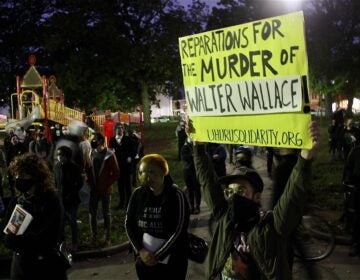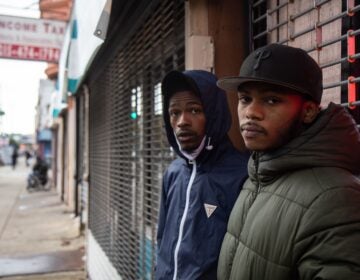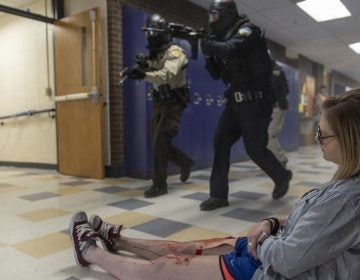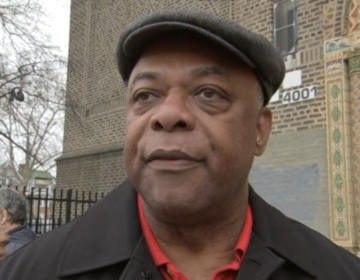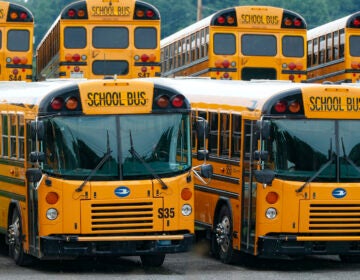Teaching Black Lives Matter virtually? Some Philadelphia teachers say it can be done
Educators' concerns followed the police shooting death of Walter Wallace Jr. and unrest across the city.
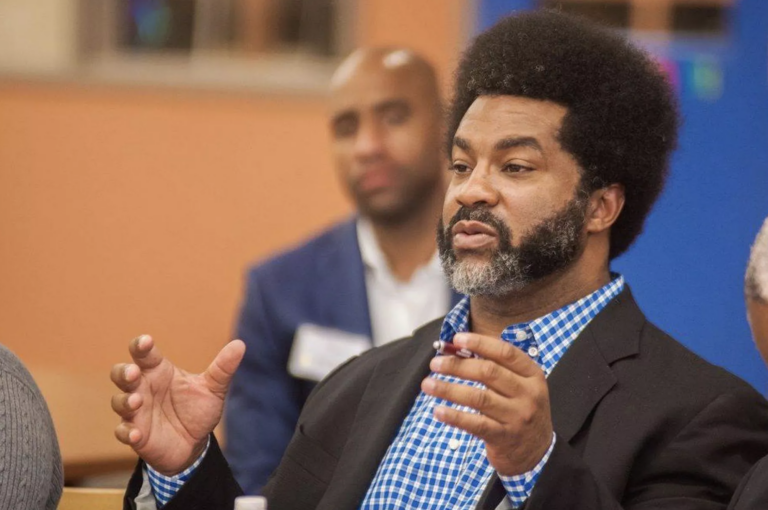
Sharif El-Mekki is chief executive officer of The Center for Black Educator Development. (Courtesy of Sharif El-Mekki)
This story originally appeared on Chalkbeat Philadelphia.
Editor’s note: This article has been updated to credit blacklivesmatteratschool.com for information about the history of the Black Lives Matter at School movement.
After weeks of juggling between stalled contract talks and the district’s reopening plans, Philadelphia Federation of Teachers (PFT) President Jerry Jordan made an unexpected and emotional declaration to the public late Monday night: “Black Lives Matter. Yesterday, today, and always.”
As most students in Philadelphia’s public schools could see their virtual classes extended to the spring, some educators and community activists argue Black Lives Matter, or BLM, curriculum should be a part of remote learning for the mostly Black and Latino school district. Their call was reinforced after two days of protests in West Philadelphia, which followed the fatal police shooting of Walter Wallace Jr. in Cobbs Creek.
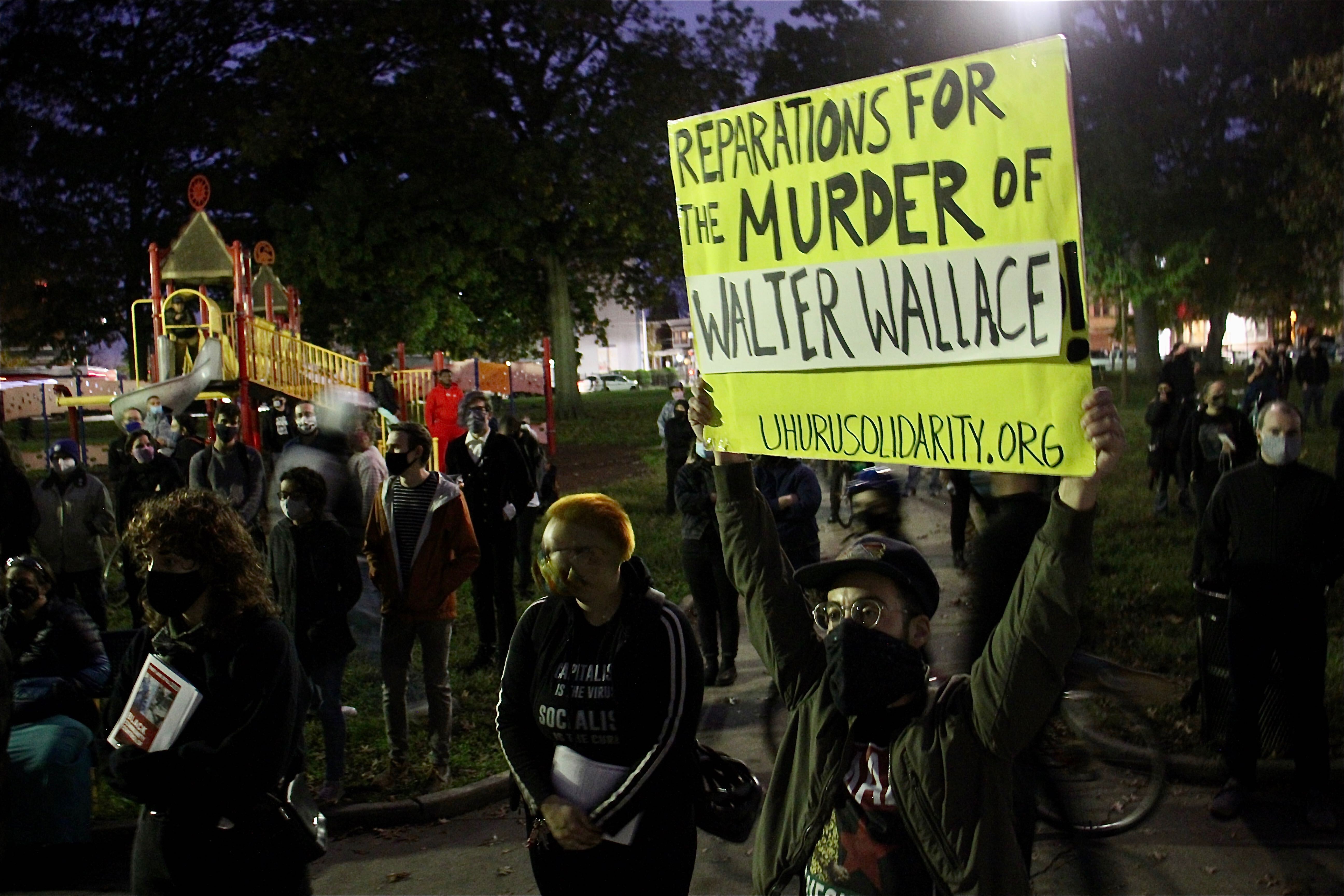
Jordan said he was “heartsick, weary, and enraged” in his statement after Wallace’s death.
According to media reports, the shooting occurred around 3:50 p.m. on Monday along the 6100 block of Locust Street. Video footage shows officers shooting Wallace who was armed with a knife. Unrest ensued past midnight on Monday, with store break ins and cars set on fire along 52nd Street in West Philadelphia. And stores were looted on Aramingo Avenue in Port Richmond on Tuesday.
“It’s important our youth don’t fall for the illusion, the trap of thinking we must live all of our lives in hands up, don’t shoot,” said Sharif El-Mekki, founder and chief executive officer of The Center for Black Educator Development. “But rather our ancestors have always taught us to take our resistance to these unjust systems.”
El-Mekki mentioned Gerald Dessus, who designed a year round Social Justice course that highlighted youth activism in South Africa and the Americas. “We need more teachers to have this type of liberatory mindset year round,” he said.
According to blacklivesmatteratschool.com, the BLM in schools movement dates back to Oct. 19, 2016, when thousands of Seattle educators came to school clad in shirts printed with the slogan “Black Lives Matter: We Stand Together.” The Philadelphia effort initially started with a day of solidarity with the teachers in Seattle.
The following year, a group of teachers within the PFT pressed schools and teachers to commit one hour a day to teaching students about the BLM movement through lesson plans and events for students of all grades.
In 2017 officials created a BLM week in the last week of January and gave teachers the option to teach the material to students. The Racial Justice Organizing Committee, or RJOC, of the Caucus of Working Educators organized the first week. The educators that created the curriculum and connected the principles to BLM week at school are members of RJOC, which is now an independent organization of the caucus.
At first the school district and the now dissolved School Reform Commission didn’t do what the caucus wanted. It wasn’t until this August that the Board of Education passed a resolution in support.
“The organizers of the Philadelphia movement always thought the amount of BLM curriculum that was taught pre-pandemic was not enough,” said Ismael Jimenez, a teacher at Kensington Creative & Performing Arts High School and one of the early advocates for BLM curriculum in Philadelphia schools. “BLM in education is a recognition of the kind of dehumanizing narrative that Black life represents in the world.”
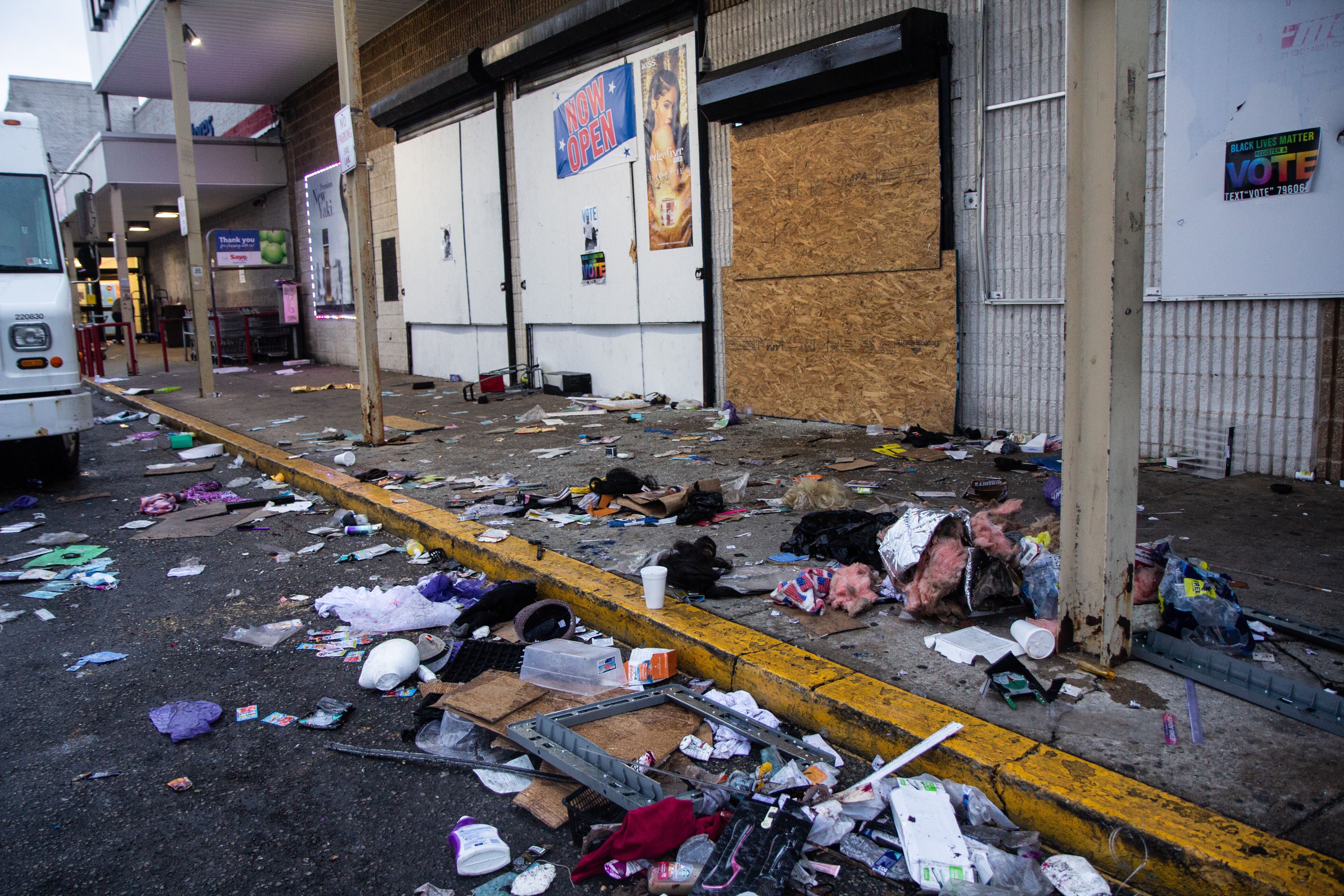
Three years later, racial reckoning is sharing center stage with the coronavirus pandemic, which has distracted students’ classroom environment.
“Every human being of conscience should see that video and know in their core that this society is deeply broken,” Jordan said in his statement on Wallace. “Our system of policing is deeply broken.”
Christopher Paslay, an English teacher at Swenson Arts and Technology High School doesn’t completely disagree with implementing the BLM curriculum virtually.
But he worries about whether the curriculum can steer clear of politics.
“If you are talking about police reform and defunding the police and you have kids whose parents are police then it creates an uncomfortable environment for the students,” he said. “And the students ask why should my parents’ jobs be defunded?”
“The spirit behind the slogan, the values of equity, and equality and justice, I honestly believe you need to have that embedded in the skills,” Paslay said. “But when you bring in Black Lives Matter politics on issues, it depends on how you present it. I’m not sure if it would be totally appropriate in certain situations, especially when the district says not to bring politics into the classroom. Students should be taught how to think, not what to think.”
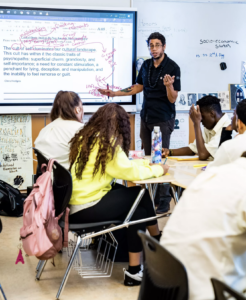
But the relationship between police and Black and Latino citizens has indeed become a political matter, with many calling for school districts here and across the country to eliminate campus police in response to the national uprising against police brutality. Earlier this year, Philadelphia district officials decided to rename school police “school safety officers.”
Christopher Rogers, program director at the Paul Robeson House and Museum, countered that Black and Latino youth often see themselves as agents of resistance rather than simply victims of racist violence.
“It’s hard to do that in a climate where most mainstream narratives focus more on the spectacle of violence and death than systemic oppression and institutional mechanisms which allow such violence [police brutality] to exist in our society,” he said.
To implement the curriculum virtually, teachers will have to do radical relationship building, said Tamara Anderson, co-organizer of the Racial Justice Organizing Committee and member of the Melanated Educators Collective.
“Some of these kids have not been able to sign on, they have internet issues, you can’t do the traditional drive-by, you have to actually call these families and homes,” she said.
Teaching BLM virtually you will see teachers come up with new and creative ways, Jimenez added.
“You can bring people into your classrooms via online,” he said. “I had a teacher colleague at my school who had an author come and talk about racism from the LatinX point of view and also talk about LGBTQ identity within that culture with her students. That would have been impossible without the virtual aspect.”
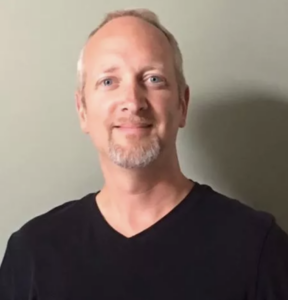
Caryn Davidson and Laleña Garcia, both experienced teachers and activists, are co-authors of a Black Lives Matter activity book, titled “What We Believe: A Black Lives Matter Principles Activity Book,” which focuses on the guiding principles of BLM at schools.
The two advise teachers to make their remote classrooms a safe learning space filled with empathy and understanding. The book is an outgrowth of their work as educators deeply involved in the BLM at schools movement. To note, their book is not required reading for Philadelphia district students.
“The point of this book is to help everyone realize that BLM creates a vision of a world that everyone would want to live in and that would ensure liberation, justice, and joy for all identities.” Davidson said. “But even more importantly, I would say that it is so important to teach these BLM principles because too many non-Black people do not understand the direct connection that it has to their lives.”
Before her first meeting with Black Lives Matter At School, Garcia, a kindergarten teacher in New York City, didn’t even know there were 13 guiding principles in BLM. She and Davidson agreed that teachers could craft year-long lesson plans around the 13 principles.
“I understood BLM as a response to the murder of Trayvon Martin, but didn’t fully understand its breadth and scope as an affirmation of the society we should live in, rather than just a response to police violence,” Garcia said. “In order to develop child-friendly language for the principles so that I could bring this work into my own classroom and support teachers who wanted to bring it into theirs, I drew upon my own experiences of 17 years in the classroom and talked to lots of early childhood educators, as well as trans educators and other queer educators, to get feedback about the language to make sure it was not only age-appropriate but sensitive.”
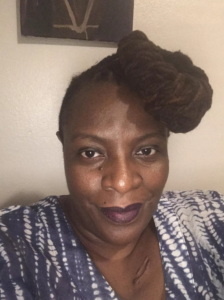
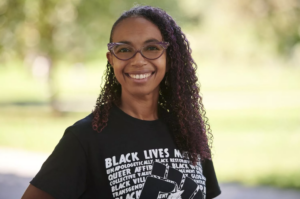
Though he didn’t mention BLM in schools specifically, Superintendent William Hite urged district employees on Tuesday to talk with one another about institutional racism and social injustice.
“Last night, this pain hit home when Walter Wallace Jr. was killed and acts of protest erupted,” he said. “The next few days may be difficult ones for all of us and the students we serve. For some, emotions may present themselves in sadness. Others may feel anger, rage, and frustration.”
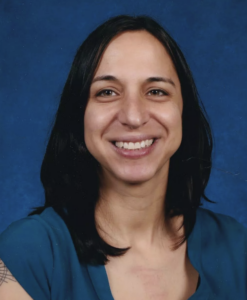
“What’s also critically important is systemic and fundamental change in the policies and practices across our district and city that reinforce racism and inequities,” Hite said.
Jordan said the public should be disgusted and horrified that an encounter with the police can, and far too often does, turn deadly for Black and brown individuals.
“Every human being of conscience should see that video and know in their core that this society is deeply broken,” he said. “Our system of policing is deeply broken. It is hard, as a Black man, to have hope for tomorrow when our society is built on such deep seated racism that our very right to breathe is called into question by those in power.”
“Mr. Wallace, Jr. should be alive tonight,” Jordan said. “Instead, his family mourns a devastating loss that unfolded before their eyes.”
Resources
Multimedia
Lesson Material
- Creating the Space to Talk about Race in Your School (PDF) National Education Association
- Classroom Activities, Circle Scripts, and Promoting Positive School Climate Rochester City School District
- Black Lives Matter Week of Action in Schools – Schedule and Resources Washington D.C. Area Educators for Social Justice
Books
- Black Lives Matter at School By Jesse Hagopian and Denisha Jones
The book includes essays, interviews, poems, resolutions, and more from educators, students and parents across the country. - Teaching For Black Lives Edited by Dyan Watson, Jesse Hagopian, and Wayne Au
The book provides resources and demonstrates how teachers connect curriculum to young people’s lives and root their concerns and daily experiences.
WHYY is your source for fact-based, in-depth journalism and information. As a nonprofit organization, we rely on financial support from readers like you. Please give today.


